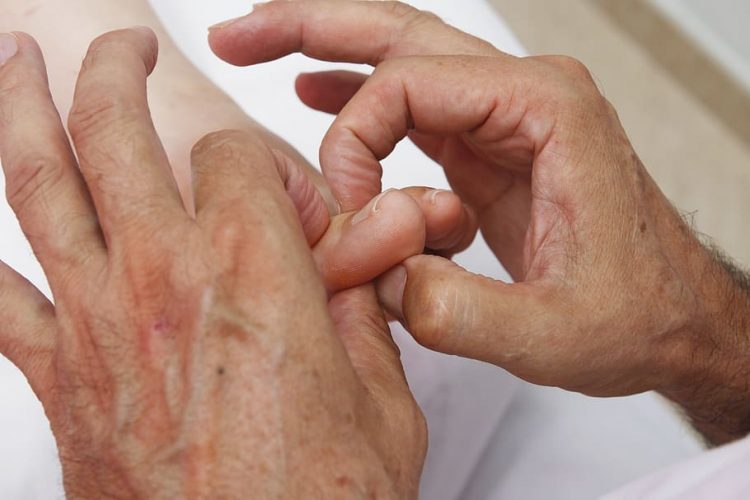While the reflexology for health sequences shown earlier, the whole foot and hand and aims to improve general well-being, you can also work on specific reflex areas to target health concerns. This article explains which reflex areas to work on to boost the body’s natural healing powers. Many people find that foot reflexology has a more powerful effect than hand reflexology, but as the latter is often more convenient, reflex areas for both are given.
In treating ailments, it is sometimes obvious which reflex areas should be worked on. For example, reflexology applied to the lung reflex area has an impact on the function of the lungs. It makes sense, therefore, to target the lung reflex areas for bronchitis, asthma, and other respiratory conditions.
Reflexologists have discovered over the years that many factors can have an impact on health problems. For example, as well as targeting the lung reflex area to relieve asthma, working the adrenal gland reflex area may also help. This is because the adrenal glands produce adrenaline, which has an important role in lung function.
In addition, many health concerns result from multiple factors. Constipation, for example, can result from tension and/or the malfunctioning of any one of the different organs that contribute to digestion and elimination. To have an impact on constipation, reflexologists will work the stomach, colon, and other reflex areas to get the desired result. When you apply reflexology to target health concerns, be prepared to experiment and take note of which seem to be the best reflex areas to work on to get results.
Hence, when applying reflexology, there are no precise rules on how long and how often you should apply the technique to particular reflex areas. To some extent, it depends on the nature of the health concern and the age and general health of the person with whom you are working.
Every now and then, you will wish to work a reflex area continuously until you get the result you’re seeking, such as relief from period pains. If the health concern you are addressing is persistent and has existed for a number of years, for example, if you regularly have constipation or headaches, you will want to work the appropriate reflex areas every day and perhaps three to four times a day.
Tips to remember
The following tips on applying reflexology will help you to apply techniques in a way that is both beneficial and pleasant to the receiver.
Tension relief: Stress and tension contribute to many health concerns. Reflexology offers three strategies for relieving tension.
Apply a full foot or hand reflexology sequence. Receiving a reflexology workout from someone else is more relaxing than working on yourself.
Consider a “dessert workout,” applying dessert after dessert. Work the solar plexus reflex area, applying a lengthy series of passes at the beginning and end of your workout.
Feel-good response: During reflexology work, it is common for the person being treated to comment, “That feels good” or even “That hurts good.” Be alert for the feel-good response and take note of the reflex area or dessert the person is referring to for future reflexology work.
Work within the comfort zone: A comment of “That hurts” or a foot or hand being drawn away indicates a reflex area is very sensitive or the pressure is too strong; treat the area more gently.
Plenty of water: remind people to drink plenty of water following reflexology work to rid the body of toxins.
Cautions: An orthodox doctor should always be consulted about a medical condition. In the case of pregnancy, refer to the Cautions.
With children, babies, or elderly people, work with less pressure and for a shorter time.
If a reflex area becomes very sensitive, work elsewhere. When you return to the area on another day, work it more frequently, but use less pressure and work it only briefly.
When working the pancreas reflex area of individuals with diabetes or hypoglycemia (low blood sugar), work only lightly and briefly, to begin with.
Do not overwork a reflex area that reflects an infected body part.
